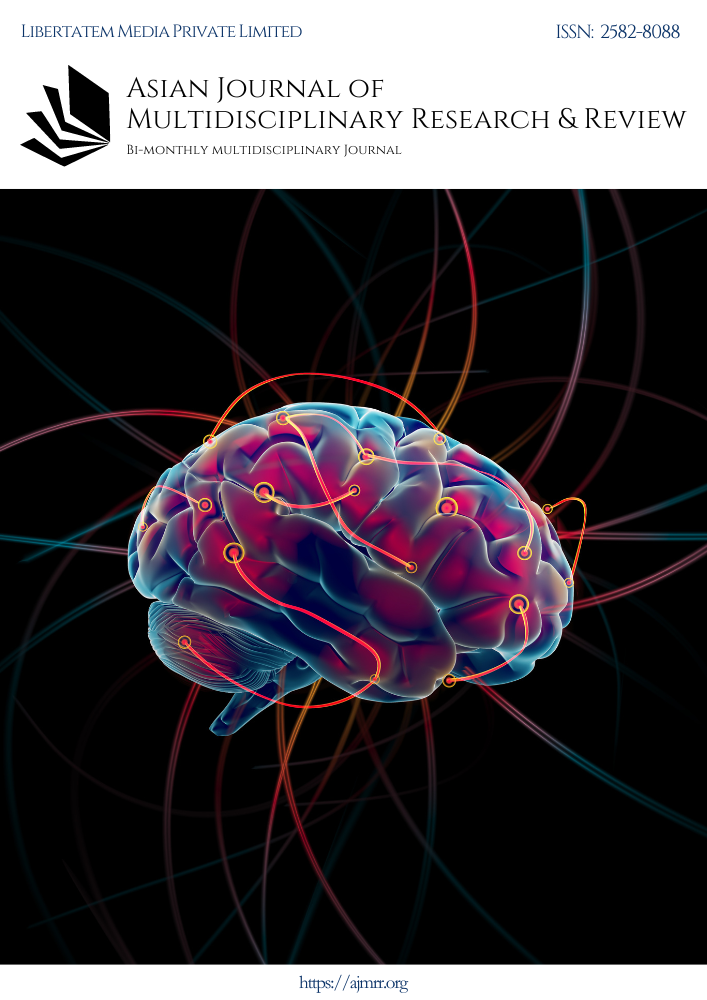Impact of General Elections on Indian Economy
Keywords:
Political Budget, Business Cycle, Business Model, PBC Model, Indian Elections, Economy and ElectionsAbstract
India is the world’s largest democratic country with around 900 million voters, 8 national parties, 57 state parties, and 2,764 unrecognised parties, 4,123 seats in state legislative assemblies, and 543 representatives in Parliament. This research paper will discuss the impact of general elections on different economic indicators such as inflation, exchange rates, stocks, and deficits. Analysing electoral and economic data spanning from 1970 to 2019, it can be concluded that there is no permanent, and predetermined pattern in these economic variables before and after the election. From the late 1980s to 1999, the political landscape in India was characterised by instability, marked by rare occurrences of governments completing their full five-year terms. The Indian public goes to the ballot almost every year to elect their representatives at the - national, state and regional level. The high frequency of elections coupled with various other factors (like international situations at that time) might be the reason that we don’t find political business cycles or political budget cycles in India.
Downloads
References
Bagad, Prashant, & Sahoo, Poonam. (2015). Effects of Elections on the Indian Economy. https://tejas.iimb.ac.in/articles/Effect%20of%20Elections%20on%20Economy_Tejas_Jan2016.pdf
Balakrishnan, Pulapre. (2024, January 01). India’s 1991 crisis and the RBI Governor’s role. The Hindu. https://www.thehindu.com/business/Economy/indias-1991-crisis-and-the-rbi-governors-role/article67695203.ece
Beniwal, Vrishti. (2023, February 01). India unveils income tax bonanza a year before elections. The Economics Times. https://economictimes.indiatimes.com/news/economy/policy/india-unveils-income-tax-bonanza-a-year-before-elections/articleshow/97520174.cms?utm_source=contentofinterest&utm_medium=text&utm_campaign=cppst
Bhattacharya, Payal. (2022, May 30). 8 years, 8 indicators: How economy fared under Modi government. The Times of India. http://timesofindia.indiatimes.com/articleshow/91895885.cms?from=mdr&utm_source=contentofinterest&utm_medium=text&utm_campaign=cppst
Chakravarty, Manas. (2013, July 22). UPA’s fiscal track record by the numbers. Mint. https://www.livemint.com/Opinion/dEHBaA0oKPZyiLTuavwfIJ/The-UPAs-fiscal-track-record-by-the-numbers.html
Chatterji, Saubhadra, & Jayaswal, Rajeev. (2023, June 20). Welfare schemes’ deadlines advanced ahead of ’24 polls. Hindustan Times. https://www.hindustantimes.com/india-news/modi-govt-speeds-up-welfare-scheme-coverage-aims-to-avoid-crowding-of-budgets-before-2024-elections-in-new-delhi-101687204165967.html
Dyson, Tim, & Maharatna, Arup. (1992). Bihar Famine, 1966-67 and Maharashtra Drought, 1970-73: The Demographic Consequences. Economic and Political Weekly. Vol. 27, No. 26, pp. 1325-1332 (8 pages).
ET Online. (2023, February 13). New income tax slabs FY 23-24: No tax if income is up to Rs 7.5 lakh but 10% tax rate for income between Rs 6 and 9 lakh, explained. https://economictimes.indiatimes.com/wealth/tax/new-income-tax-slabs-fy23-24-no-tax-if-income-is-up-to-rs-7-lakh-but-10-tax-rate-for-income-between-rs-6-and-9-lakh-explained/budget-2023-what-taxpayers-must-know/slideshow/97873096.cms
Groww. (2023, June 2). Impact of Elections on the Indian Economic Market: History So Far.https://groww.in/blog/impact-of-elections-on-the-indian-economic-market-history-so-far
Kapur, Devesh, & Vaishnav, Milan. Eds. (2018) Costs of Democracy: Political Finance in India. Oxford University Press. 311 pages. https://doi.org/10.4000/samaj.5336
K., Muthukumar. (2021, August 3). History of Inflation in India and what to expect going forward. Scripbox. https://scripbox.com/blog/history-of-inflation-in-india-and-what-to-expect-going-forward/
Kumar, Arun. (2021, March 10). The 1970s Indian Economy: A Period of Growing Strains and the Nation's Fight Against Poverty. The Wire. https://thewire.in/history/indian-economy-1971-poverty-bank-nationalisation-indira-gandhi
Kwatra, Nikita. (2018, June 25). Govt spending before Lok Sabha elections: What data shows. Mint. https://www.livemint.com/Politics/c2KWaGzr3uPO4UQbLSK10H/Government-spending-before-2019-Lok-Sabha-elections-What-da.html
Kwatra, Nikita. (2018, December 11). Why elections spell trouble for the real estate sector. Mint. https://www.livemint.com/Politics/4pfM3jt6v0Tc9djPMui03M/Why-elections-spell-trouble-for-real-estate-sector.html
Management Study Guide. (n.d.). How Elections Impact The Economy? https://www.managementstudyguide.com/how-elections-impact-the-economy.htm
Mint. (2019, August 14). A short history of Indian economy 1947-2019: Tryst with destiny & other stories. https://www.livemint.com/news/india/a-short-history-of-indian-economy-1947-2019-tryst-with-destiny-other-stories-1565801528109.html
Nag, Anirban. (2019, March 12). Low India inflation a double-edged sword for Modi before Elections 2019. Mint. https://www.livemint.com/elections/lok-sabha-elections/low-india-inflation-rate-double-edged-sword-for-modi-before-elections-2019-1552405624632.html
Surabhi. (2024, January 07). The economics of election freebies. Business Today. https://www.businesstoday.in/magazine/deep-dive/story/the-economics-of-election-freebies-410621-2023-12-23
TNN. (2019, February 04). Government expects fiscal deficit to be better than estimate. The Times of India. https://timesofindia.indiatimes.com/business/india-business/government-expects-fiscal-deficit-to-be-better-than-estimate/articleshow/67825798.cms?from=mdr
Downloads
Published
Issue
Section
Categories
License
Copyright (c) 2024 Khushal Gulia (Author)

This work is licensed under a Creative Commons Attribution-NonCommercial-ShareAlike 4.0 International License.
License Terms
Ownership and Licensing:
Authors of research papers submitted to the Asian Journal of Multidisciplinary Research & Review (AJMRR) retain the copyright of their work while granting the journal certain rights. Authors maintain ownership of the copyright and grant the journal a right of first publication. Simultaneously, authors agree to license their research papers under the Creative Commons Attribution-ShareAlike 4.0 International (CC BY-SA 4.0) License.
License Permissions:
Under the CC BY-SA 4.0 License, others are permitted to share and adapt the work, even for commercial purposes, as long as proper attribution is given to the authors and acknowledgment is made of the initial publication in the Asian Journal of Multidisciplinary Research & Review. This license allows for the broad dissemination and utilization of research papers.
Additional Distribution Arrangements:
Authors are free to enter into separate contractual arrangements for the non-exclusive distribution of the journal's published version of the work (e.g., posting it to institutional repositories or publishing it in books), provided they acknowledge the initial publication of the work in the Asian Journal of Multidisciplinary Research & Review.
Online Posting:
Authors are encouraged to share their work online (e.g., in institutional repositories or on personal websites) both prior to and during the submission process to the journal. This practice can lead to productive exchanges and greater citation of published work.
Responsibility and Liability:
Authors are responsible for ensuring that their research papers do not infringe upon the copyright, privacy, or other rights of any third party. The Asian Journal of Multidisciplinary Research & Review disclaims any liability or responsibility for any copyright infringement or violation of third-party rights in the research papers.



